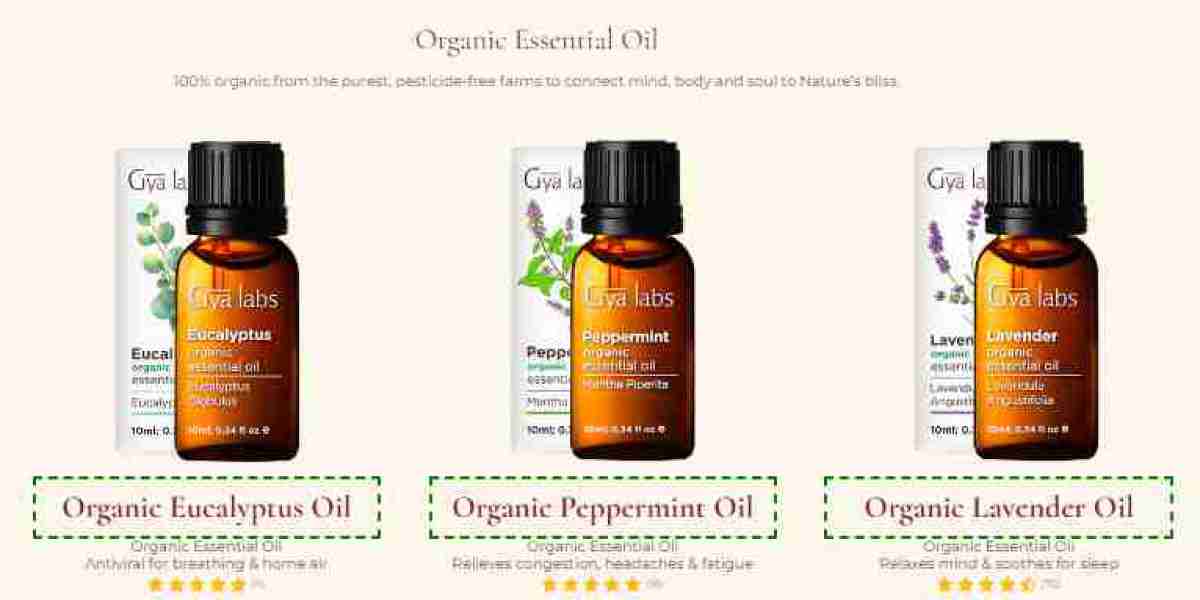In a world that often leans towards synthetic fragrances and conventional cultivation methods, the allure of organic essential oils has gained unprecedented popularity. As consumers increasingly seek natural alternatives, the trend of growing one's own aromatic plants for the extraction of organic essential oils is becoming a rewarding and sustainable endeavor. In this guide, we'll explore the art of cultivating a fragrant oasis right in your backyard, providing not only aromatic pleasure but also a source of pure and organic essential oils.
The Essence of Organic Essential Oils
The term 'organic essential oils' carries a distinct resonance in today's health-conscious society. These oils, derived from various aromatic plants, capture the essence of nature in its purest form. Free from synthetic additives and pesticides, organic essential oils retain the holistic benefits that traditional cultivation methods offer. The journey to harnessing these precious oils begins with the conscious decision to grow your own aromatic plants, ensuring a sustainable source for your botanical extracts.
Choosing the Right Aromatic Plants
Embarking on your organic essential oil journey requires careful consideration of the plants you intend to cultivate. Opting for varieties that thrive in your local climate ensures a successful and rewarding cultivation experience. Some popular choices for homegrown essential oils include lavender, rosemary, peppermint, chamomile, and eucalyptus. Each of these plants not only provides aromatic delight but also possesses unique therapeutic properties that contribute to the holistic benefits of the extracted essential oils.
Cultivation Practices for Organic Aromatic Plants
1. Soil and Sunlight:
The foundation of successful cultivation lies in the quality of your soil and the amount of sunlight your plants receive. A well-draining, nutrient-rich soil is essential for the healthy growth of aromatic plants. Most aromatic plants thrive in full sunlight, so choose a location in your garden that receives ample sunlight throughout the day.
2. Watering:
While aromatic plants generally prefer drier conditions, consistent watering is crucial, especially during the initial stages of growth. It's essential to strike a balance, avoiding waterlogged soil that can lead to root rot. Consider installing a drip irrigation system to maintain optimal moisture levels.
3. Pruning and Harvesting:
Regular pruning not only encourages bushier and more robust growth but also stimulates the production of essential oils. Harvesting should be timed correctly, typically in the morning when the concentration of essential oils is at its peak. Employing proper harvesting techniques ensures a bountiful yield of high-quality organic essential oils.
The Organic Advantage
One of the primary motivations for cultivating aromatic plants for organic essential oils is the assurance of organic purity. By adopting organic farming practices, you eliminate the use of synthetic pesticides and fertilizers, ensuring that your essential oils remain uncontaminated by harmful chemicals. This commitment to organic cultivation not only benefits your health but also contributes to the broader environmental sustainability movement.
The Art of Distillation
The process of transforming freshly harvested aromatic plants into organic essential oils is an art that has been perfected over centuries. Distillation, a time-honored method, remains the most common technique for extracting essential oils. This process involves heating the plant material to release the volatile compounds, which are then condensed into a liquid form. Investing in a quality still for home distillation allows you to capture the pure essence of your cultivated plants, yielding organic essential oils with unparalleled fragrance and potency.
DIY Essential Oil Recipes
Once you've successfully distilled your organic essential oils, the possibilities for their use are limitless. Creating your own DIY essential oil blends not only adds a personal touch but also allows you to tailor the aroma to your preferences. Here are a few simple recipes to get you started:
1. Relaxation Blend:
- Lavender: 5 drops
- Chamomile: 3 drops
- Bergamot: 2 drops
- Carrier oil (such as jojoba or sweet almond): 1 oz
Mix these oils in a dark glass bottle for a calming blend perfect for diffusing or adding to a warm bath.
2. Energizing Citrus Blend:
- Lemon: 4 drops
- Orange: 3 drops
- Peppermint: 2 drops
- Carrier oil: 1 oz
Create this invigorating blend to boost your mood and increase focus.
3. Respiratory Relief Blend:
- Eucalyptus: 4 drops
- Tea Tree: 3 drops
- Pine: 2 drops
- Carrier oil: 1 oz
Ideal for diffusing during the cold and flu season, this blend helps clear the respiratory system.
Sharing the Bounty
As your garden flourishes and your collection of organic essential oils grows, consider sharing the bounty with friends and family. Handcrafted essential oil gifts not only carry a personal touch but also promote the benefits of organic cultivation and aromatherapy. Encourage loved ones to embark on their own journey of growing aromatic plants, fostering a community dedicated to the art of cultivating and extracting organic essential oils.
Conclusion
Cultivating your own aromatic plants for organic essential oils is a gratifying and fulfilling endeavor that aligns with the principles of sustainability and well-being. By immersing yourself in the art of cultivation, distillation, and blending, you not only create a fragrant oasis in your backyard but also contribute to a healthier and more environmentally conscious way of living. Embrace the organic advantage, and let the essence of nature permeate every drop of the precious oils you harvest, creating a sensory experience that is truly unmatched.








